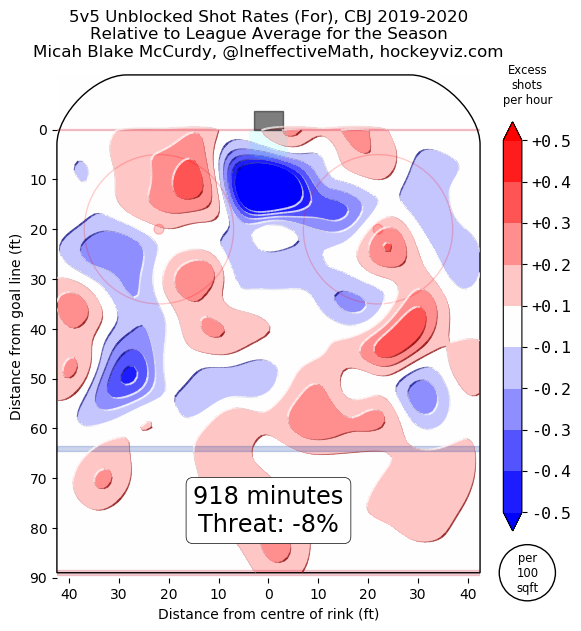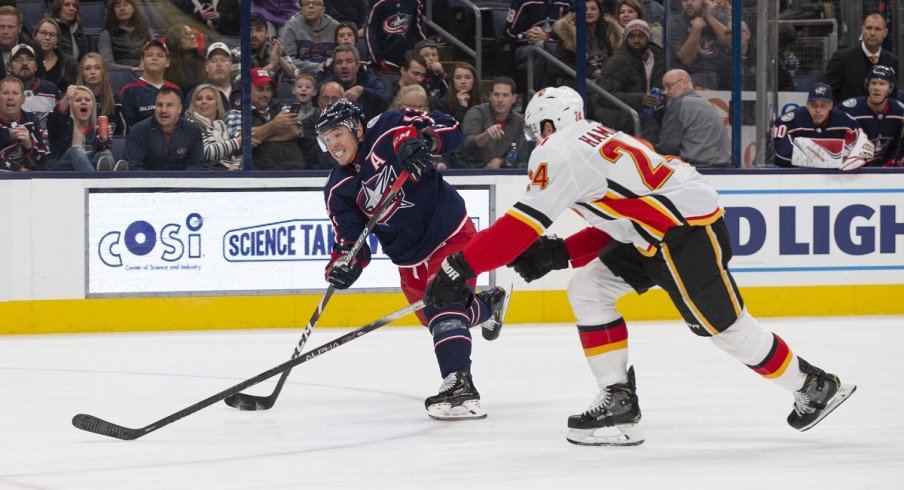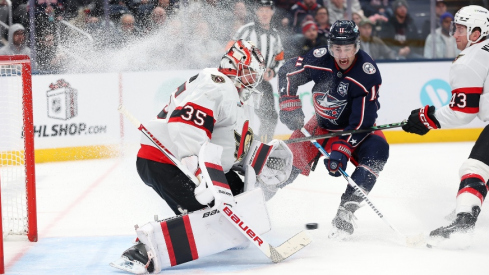The Columbus Blue Jackets improved to 2-1-1 in their past four games with a 3-2 OT win over the St. Louis Blues on Friday night, but are still searching for easy goals.
Struggling to find the back of the net has been an ongoing issue all season, and finally, the Blue Jackets found themselves at the bottom of the NHL rankings in shooting percentage.
Per NaturalStatTrick, the club is in last place in the NHL in shooting percentage at both 5v5 and all situations, as the power play (which, to their credit, has been better) continues to flutter towards the basement of the NHL. At just 6.32% (5v5) and 6.98% (all situations), the Blue Jackets are simply unable to find the back of the net.
The Blue Jackets have outshot their opponents in 15 of 19 games this season, but are second to last (Detroit) in the NHL in goals for/60 minutes at just 2.33 goals (all situations). This jives with NaturalStatTrick's expected goals for/60 rate of 2.5, which is seventh-worst in the NHL. The reason they've outshot their opponents has less to do with shot generation (28th in the NHL) and more to do with shot suppression (12th in the NHL).
So, what is causing this season-long struggle?
Working backwards, the club has had a difficult time generating high-quality scoring chances with much consistency. Their 8.76 high-danger chances-for per 60 minutes (HDCF%/60) ranks 29th in the NHL (all situations). The formula for success isn't rocket science: teams that generate a lot of chances score more. The Carolina Hurricanes, for example, are first in the NHL in both HDCF%/60 and goals for/60.
The team has had a difficult time generating high-quality scoring chances because they lack the high-end playmakers to create. Though it's difficult for many fans to hear, the club desperately misses Artemi Panarin. His arrival to the New York Rangers has not-so-coincidentally coincided with Ryan Strome's emergence as a high-end producer. Strome has 6-12-18 in just 18 games (an 82 point-pace). His previous career-high for points is 50 back in 2014-15 with the New York Islanders.
While the Blue Jackets have plenty of serviceable NHL playmakers, none of them are able to threaten an opposition quite like their former Russian superstar. And while Pierre-Luc Dubois, particularly, has carried the puck more in his absence, the club has really struggled to get to the dangerous parts of the ice on a consistent basis.
But don't just take my word for it. The below graphic, from the incomparable hockeyviz.com, shows the Blue Jackets heat map thus far this season. The darker the bubble, the more pronounced the advantage (red) or disadvantage (blue) that the team has been able to generate at 5v5. The low-slot, the most dangerous part of the ice, is as dark blue as the Pacific Ocean.

Getting to the high-danger areas of the ice is not a new or novel concept. Holding onto the puck for an extra second is something the coaching staff has emphasized (particularly with a player like Alexander Wennberg), putting increased pressure on the defense. But it's also easier said than done, especially when confidence is at a low point.
We'd be remiss to not mention Cam Atkinson by name. He's on pace for the worst statistical season of his career, and while he surely misses #9, he was a 35-goal scorer the year before Panarin was even a member of the Blue Jackets. For Atkinson, it's about doing the little things right. Goal-scorers are streaky by nature, and once he finds the back of the net again, it would shock nobody to see him go on a bit of a tear.
For the Blue Jackets, the hope is that this comes sooner rather than later, as the tension continues to build as the margin for error stays razor thin.

